HOW LONG DO I HAVE TO SUE OR BRING A CASE AFTER BEING INJURED IN AN ACCIDENT – MINNESOTA LAWYERS STATUTE OF LIMITATIONS
Our accident injury lawyers frequently get calls from people wanting to know how long they have to bring a claim or start a lawsuit after being injured in an accident. Unfortunately, there is not a single, simple answer to that question. The statute of limitations for a case in Minnesota depends on several factors. For example, how the injury happened and where the injury happened. In other words, how long you have depends on how the accident happened.
For example, the time limit for a case in Minnesota is different depending on whether the injury was an accident or intentional. Also, whether the injured person was a child or otherwise incapacitated at the time of the accident. In addition to the statute of limitations, there may also be notice requirements in some cases. For example, cases against the government and cases against bars.
If you were injured in an accident in MN, call our lawyers for a free consultation. We will discuss your situation with you and explain your rights, including the statute of limitations for your case. You can meet an experienced accident injury attorney at our offices in Edina, Minneapolis, St. Louis Park, or Woodbury.
TOP INJURY LAWYERS MN
Our top lawyers MN will also meet you at your home if you have been injured in Minneapolis, St. Paul, Burnsville, Apple Valley, or Lakeville. We also come to Roseville, Forest Lake, Brooklyn Park, Brooklyn Center. Maple Grove, Plymouth, Chanhassen, Chaska, Albert Lea, Rogers, and other cities throughout MN. We will ask you questions to determine the statute of limitations on your case, and we will make sure your rights are protected.
In the meantime, in the area below we have pasted some of the statutes of limitations in MN. These are the statutes of limitation our injury attorneys deal with most frequently. However there are more – and every case is different. Our best advice is that you call a lawyer soon after you have been injured in an accident. That way, you won’t miss any deadlines and can find out for sure how long you have to sue if necessary.

541.05 VARIOUS CASES, SIX YEARS.
Subdivision 1. Six-year limitation.
Except where the Uniform Commercial Code otherwise prescribes, the following actions shall be commenced within six years:
(1) upon a contract or other obligation, express or implied, as to which no other limitation is expressly prescribed;
(2) upon a liability created by statute, other than those arising upon a penalty or forfeiture or where a shorter period is provided by section 541.07;
(3) for a trespass upon real estate;
(4) for taking, detaining, or injuring personal property, including actions for the specific recovery thereof;
(5) for criminal conversation, or for any other injury to the person or rights of another, not arising on contract, and not hereinafter enumerated;
(6) for relief on the ground of fraud, in which case the cause of action shall not be deemed to have accrued until the discovery by the aggrieved party of the facts constituting the fraud;
…
(9) for damages caused by a dam, used for commercial purposes; or
(10) for assault, battery, false imprisonment, or other tort resulting in personal injury, if the conduct that gives rise to the cause of action also constitutes domestic abuse as defined in section 518B.01.
Subd. 2. Strict liability.
Unless otherwise provided by law, any action based on the strict liability of the defendant and arising from the manufacture, sale, use or consumption of a product shall be commenced within four years.
541.051 LIMITATION OF ACTION FOR DAMAGES BASED ON SERVICES OR CONSTRUCTION TO IMPROVE REAL PROPERTY.
Subdivision 1. Limitation; service or construction of real property; improvements.
(a) Except where fraud is involved, no action … arising out of the defective and unsafe condition of an improvement to real property, shall be brought against any person performing or furnishing the design, planning, supervision, materials, or observation of construction or construction of the improvement to real property or against the owner of the real property more than two years after discovery of the injury. Nor in any event shall such a cause of action accrue more than ten years after substantial completion of the construction.
Date of substantial completion shall be determined by the date when construction is sufficiently completed so that the owner or the owner’s representative can occupy or use the improvement for the intended purpose.
(b) Notwithstanding paragraph (a), an action for contribution or indemnity arising out of the defective and unsafe condition of an improvement to real property may be brought no later than two years after the cause of action for contribution or indemnity has accrued, regardless of whether it accrued before or after the ten-year period referenced in paragraph (a), provided that in no event may an action for contribution or indemnity be brought more than 14 years after substantial completion of the construction.
(c) For purposes of paragraph (a), a cause of action accrues upon discovery of the injury. For purposes of paragraph (b), a cause of action for contribution or indemnity accrues upon the earlier of commencement of the action against the party seeking contribution or indemnity, or payment of a final judgment, arbitration award, or settlement arising out of the defective and unsafe condition.
EXCEPTION FOR MAINTENANCE OF PROPERTY
(d) Nothing in this section shall apply to actions for damages resulting from negligence in the maintenance, operation or inspection of the real property improvement against the owner or other person in possession.
(e) The limitations prescribed in this section do not apply to the manufacturer or supplier of any equipment or machinery installed upon real property.
Subd. 2. Action allowed; limitation.
Notwithstanding the provisions of subdivision 1, paragraph (a), in the case of a cause of action described in subdivision 1, paragraph (a), which accrues during the ninth or tenth year after substantial completion of the construction, an action to recover damages may be brought within two years after the date on which the cause of action accrued. But, in no event may such an action be brought more than 12 years after substantial completion of the construction. Nothing in this subdivision shall limit the time for bringing an action for contribution or indemnity.
Subd. 3. Not construed.
Nothing in this section shall be construed as extending the period prescribed by the laws of this state for the bringing of any action.
Subd. 4. Applicability.
For actions based on breach of the warranties set forth in section 327A.02, or to actions based on breach of an express written warranty, such actions shall be brought within two years of the discovery of the breach. In the case of an action under section 327A.05, which accrues during the ninth or tenth year after the warranty date, as defined in section 327A.01, subdivision 8, an action may be brought within two years of the discovery of the breach. But, in no event may an action under section 327A.05 be brought more than 12 years after the effective warranty date.
An action for contribution or indemnity arising out of actions described in this subdivision may be brought no later than two years after the earlier of commencement of the action against the party seeking contribution or indemnity, or payment of a final judgment, arbitration award, or settlement arising out of the breach, provided that in no event may an action for contribution or indemnity arising out of an action described in section 327A.05 be brought more than 14 years after the effective warranty date.
541.07 TWO- OR THREE-YEAR
LIMITATIONS.
Except where the Uniform Commercial Code, this section, section 541.05, 541.073, 541.076, or 604.205 otherwise prescribes, the following actions shall be commenced within two years:
…
(6) for damages caused by the establishment of a street or highway grade or a change in the originally established grade;
(7) against the person who applies the pesticide for injury or damage to property resulting from the application, but not the manufacture or sale, of a pesticide.
541.076 HEALTH CARE PROVIDER
(a) For purposes of this section, “health care provider” means a physician, surgeon, dentist, occupational therapist, other health care professionals as defined in section 145.61, hospital, or treatment facility.
(b) An action by a patient or former patient against a health care provider alleging malpractice, error, mistake, or failure to cure, must be commenced within four years from the date the cause of action accrued.
(c) A counterclaim may be pleaded as a defense to any action for services brought by a health care provider after the limitations described in this section, if the counterclaim belonged to the party pleading it at the time it became barred and was not barred at the time the claim sued on originated. However, no judgment on the counterclaim except for costs can be rendered in favor of the party so pleading it.
